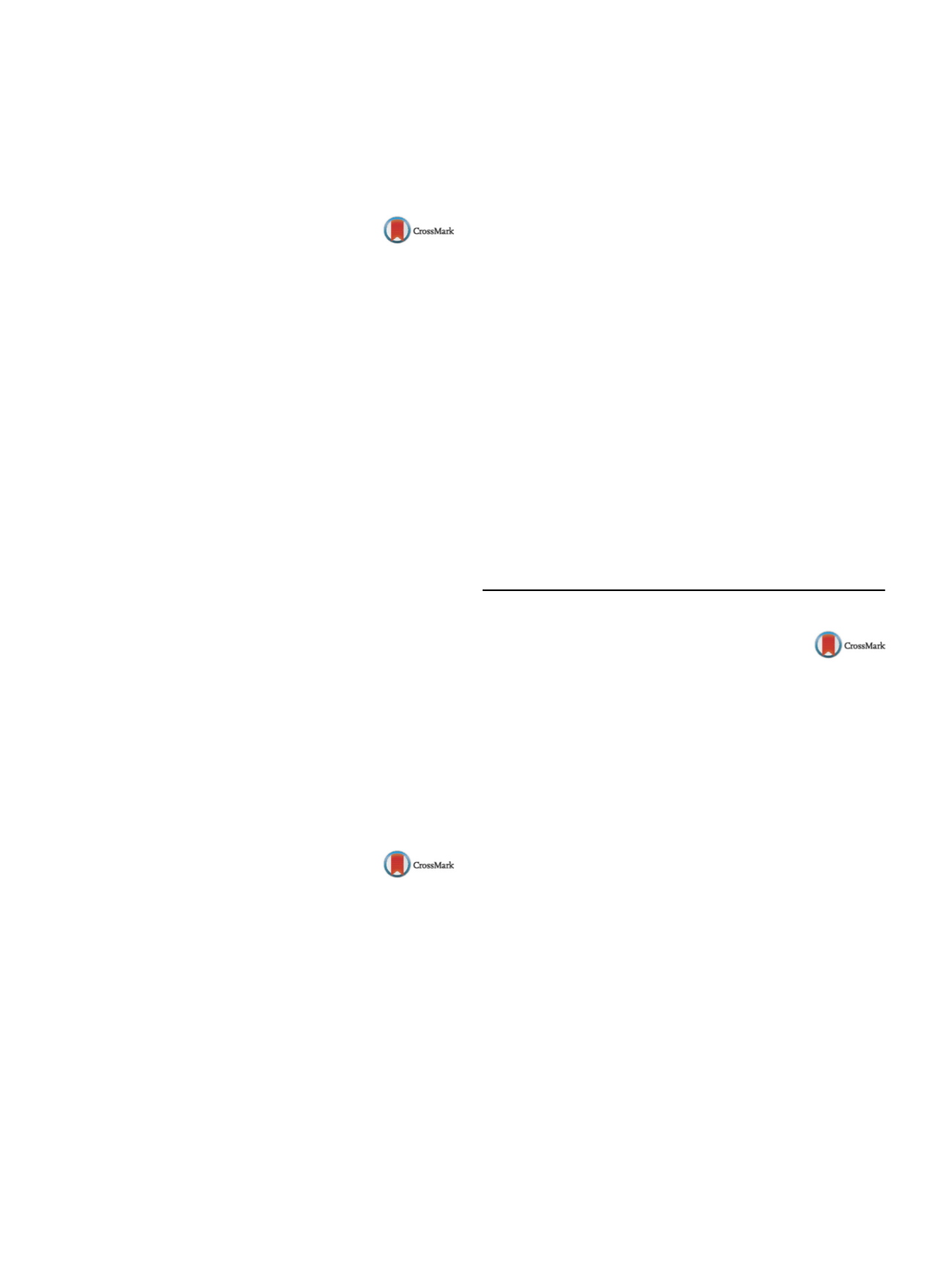

S600
25th European Congress of Psychiatry / European Psychiatry 41S (2017) S583–S644
Reference
[1] Trollor JN. Psychiatric disorders: management. In: Management
guidelines: developmental disability. Version 3. Melbourne:
Therapeutic Guidelines Limited; 2012.
http://dx.doi.org/10.1016/j.eurpsy.2017.01.931EV0602
Effect of chronic exposure of Losartan
in mouse prenatal alcohol exposure
(PAE) model
A. Takyi
Brighton Pharmacy School, Pharmacy, Solihull, United Kingdom
Background and aims
Foetal alcohol syndrome (FAS) is a condi-
tion that currently affects 1% of babies born in Europe and North
America. It is characterisedbymemory impairment, developmental
delay and distinctive facial features. This research uses amouse pre-
natal alcohol exposure (PAE) model to explore the effects of PAE on
learning, memory and to explore the potentially beneficial effects
of common drugs previously shown to have cognitive enhancing
effects in both humans and animals.
Methods
Sixty mice (
M
= 30
F
= 30) C57 mice were exposed to
5% ethanol throughout pregnancy. After weaning the offspring
received Losartan (10mg/kg) via their drinking water for 8 weeks.
At 3months, learning and memory was assessed using the novel
object recognition paradigm.
Results
PAE caused a significant decrease in offspring body
weight. Treatment with Losartan caused no growth impairment or
renal damage. Novel object recognition indicated that PAE caused
male offspring to spend significantly less time exploring the novel
object than controls and that treatment with Losartan had the effect
of improving awareness of the novel object both in the control
and alcohol group and decreasing anxiety (
P
≤
0.05). A significant
opposite effect was noticed in the female alcohol progeny when
compared to themale alcohol progeny (
P
≤
0.05). Losartan in female
alcohol progeny had no effect on anxiety. Male control Losartan
spent more time exploring the novel object than male alcohol
Losartan (
P
≤
0.05).
Conclusions
Losartan had no deleterious effects on the develop-
ment of the animals, andwas able to improve learning andmemory
in control animals without effect in PAE mice.
Disclosure of interest
The author has not supplied his declaration
of competing interest.
http://dx.doi.org/10.1016/j.eurpsy.2017.01.932EV0603
Kleefstra syndrome: Considerations
about treatment strategy in 2 patients
with a causative Ehmt1 mutation and
apathy
W.M.A. Verhoeven
1 ,∗
, J. Egger
1, N. De Leeuw
2, T. Kleefstra
21
Vincent van Gogh Institute for Psychiatry, Centre of Excellence for
Neuropsychiatry, Venray, The Netherlands
2
Radboud University Medical Centre, Department of Human
Genetics, Nijmegen, The Netherlands
∗
Corresponding author.
Introduction
Kleefstra syndrome [OMIM: 610253] is caused by
a 9q34.3 micro-deletion or an intragenic mutation in the EHMT1
gene. Its core phenotype comprises intellectual disability, child-
hood hypotonia and distinct dysmorphisms. The syndrome can be
associated with congenital anomalies, epilepsy, cardiac arrhyth-
mias and a typical sleep pattern. Starting from adult age, a
regressive phenotype may develop.
Objectives
Further delineation of the neuropsychiatric pheno-
type.
Aims
Formulating a comprehensive treatment approach.
Methods
Detailed examination of two patients with EHMT1
mutation.
Results
Patient 1, male aged 34 years, showed recurrent behav-
ioral problems with aggression and self-injuries as well as
obstipation. Elsewhere, a diagnosis of autismwas established. Aged
24, he suffered from some epileptic seizures. Recently, parox-
ysmal atrial fibrillation was diagnosed. Neither treatment with
pipamperone and risperidone nor with valproate was effective for
behavioral control. Array analysis and metabolic screening did not
reveal abnormalities. Whole exome sequencing revealed an intra-
genic EHMT1mutation. Patient 2, female aged 53 years, was known
with childhood epilepsy and developed gradual decline of gen-
eral functioning with motor slowing from her third decade. In her
thirties, a mood/anxiety disorder was suspected for which several
antidepressants were given without any effect. Array analysis was
normal. A pathogenic nucleotide deletion was identified resulting
in a frame-shift in exon 21 of the EHMT1 gene. In both patients
marked apathy was observed (AES = 62 and 64, respectively).
Conclusions
Apathy syndrome in Kleefstra syndrome should be
differentiated from depression and autism. Apart from treat-
ment with selected psychotropics, individually targeted contextual
measures should always be implemented.
Disclosure of interest
The authors have not supplied their decla-
ration of competing interest.
http://dx.doi.org/10.1016/j.eurpsy.2017.01.933e-Poster viewing: Mental health care
EV0604
Innovative home based assertive
outreach service for treatment of
schizophrenia in Larkano, Pakistan
(SOUL): Programme implementation
and outcomes at the end of five years
S. Afghan
Dorothy Pattison Hospital, Psychiatry, Walsall, United Kingdom
Introduction
There is a significant service gap in provision of
essential treatment to patients with severe mental disorders in
low-income countries, which leads to increased mental health dis-
ability and bigger disease burden on the families and society. The
SOUL programme is a first of its kind in the country, which utilizes
assertively engaging patients at their homes.
Objectives
The key objectives are early recognition, treatment
and psychosocial support to patients with the diagnosis of
schizophrenia. Additional objectives include social recovery of the
patients, psycho education to family members and generating clin-
ical and functional outcomes.
Methods
Programme design developed by host psychiatry
department through stakeholder consultation. Trainingwas under-
taken for programme teamand included training on use of outcome
measures namely Brief Psychiatric Rating Scale (BPRS), Clinical
Global Impression (CGI) and Global Assessment of Functioning
(GAF). Hosting carers and families meetings on regular intervals
serve the purpose of family psycho-education and receiving infor-
mal feedback about the service.
Results
Preliminary findings on clinical and functional outcomes
of cohort of 125 patients recruited over continual basis over 5 years
are presented. Complex community intervention shows significant
change in all outcome scales (with good effect size) with before and
after analysis at one year. The programme demonstrated excellent
engagement with patients and very low dropout rate.
Conclusions
Low cost community intervention involving trained
doctor and psychiatric nurses working under close supervision of a


















